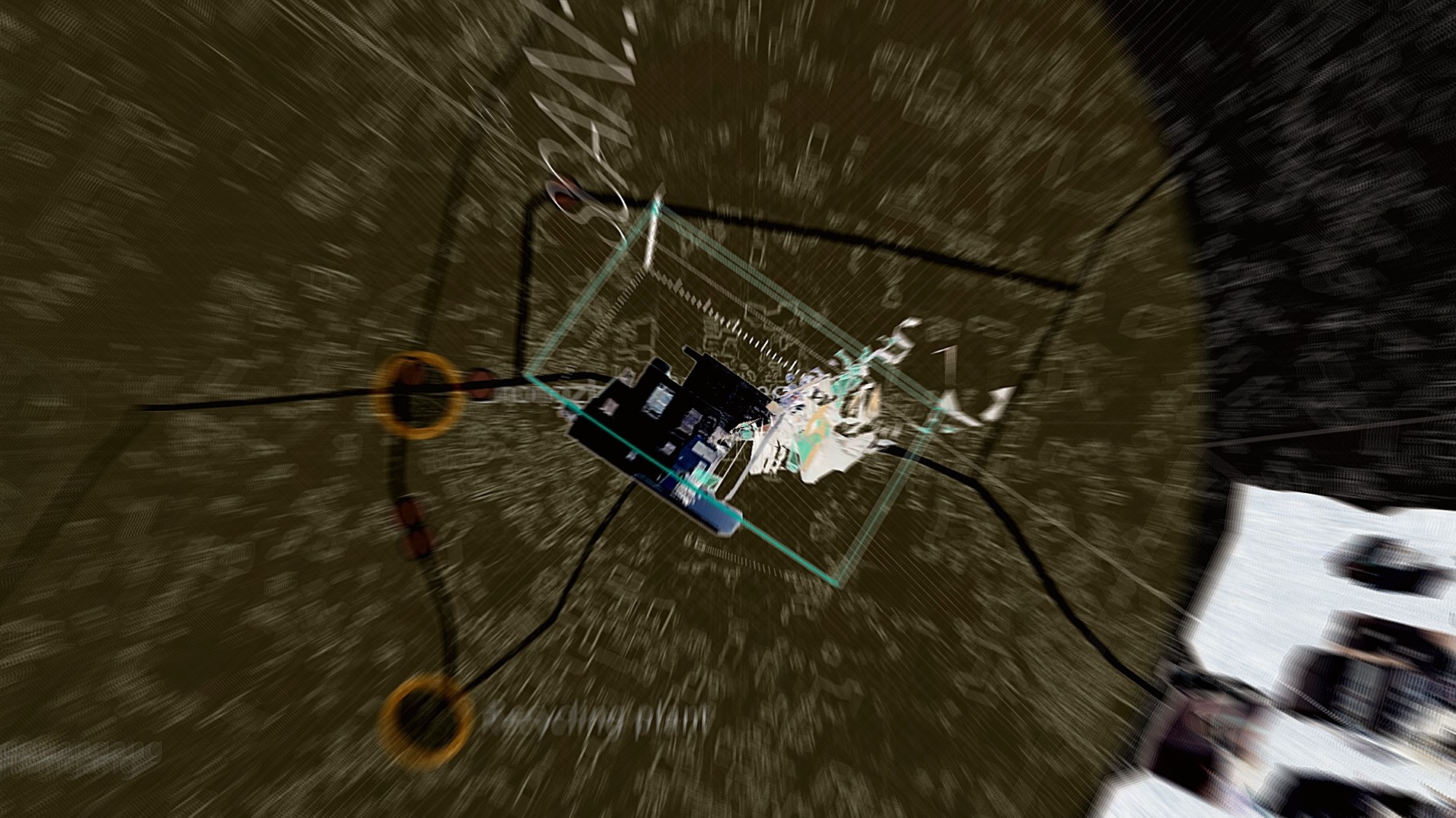About PATHS TO THE PAST
如果我們對於某個事物的記憶不存在它內在的屬性中,而是個人在不同脈絡下回憶該事物的感覺;如果我們對於家的感覺,是在跨過某個邊界之後就油然而生的穩定感,那麼,我們難道不是以某種特定的演算方式,將不同的脈絡下的回憶方式定義為「記憶」,將邊界的跨越定義為「家」的抵達/離開?那麼,演算法時代的「記憶」到底以什麼樣的模式呈現?
概念美術館第二檔展覽「昨日的路徑」邀請到王新仁《昨日的路徑》VR版,作品根據展出空間建模VR影像空間,演算出屬於觀者個人的空間影像,既是現地,也是私密的。正如王新仁的家鄉神岡是他記憶的所在、回憶抵達之處,進入《昨日的路徑》的我們,也將產生我們在神岡的空間記憶。這樣的影像、這樣的經驗與記憶,是否成立?如何保存?
If our memory of a certain thing does not exclusively consist of the intrinsic attributes of that thing but the feelings arising from the act of recalling in distinct contexts, and if the sense of home is but the sentiment of settling/stability that strikes us when crossing the borders, then are we not employing some sort of algorithms to define the acts of recalling under distinct contexts as memories and the crossing of borders as departing/arriving home. Hence, how is the memory in the age of algorithms to be represented?
Concept Museum of Art Vol. 2 invites Wang Hsin-Jen to exhibit PATHS TO THE PAST (VR version). The VR space of this work is rendered accordingly to the dimension of the exhibition space to create a customized vision of space for the viewer, which makes it site-specific yet personal. As with Shengang, the artist’s hometown, being where his memory rests and remembrance called to, we who enter the PATHS TO THE PAST will collect our own spatial memory of being in Shengang. Can such images, experience, and memory as presented in the exhibition be construed as real, and be preserved?
作品介紹 Introduction
是什麼定義了家,是空間上的地理座標、是戶籍上的居住地、還是家人居住十年以上的場所?又或者當你背井離鄉、進退無門後,家的意義才真的產生。 《昨日的路徑》是一件探討記憶和家的作品,作者利用空拍、三維實景的方式,創造了獨特的視覺經驗;在程式自動演算下,作品面貌實時改變,三維實景輪番交錯,固有的景觀產生不可預期、流動的新面貌,搭配上田野錄音、顆粒合成音景,呈現濃厚對於家鄉無可言喻的鄉愁。
而本次展出《昨日的路徑》VR版有別於雙頻道版的電腦排程自動演算,此版本讓觀者能介入作品的流動和衍生狀態。觀者能自由的選擇視野、角度切入作品,過程中身體的移動,將被一一紀錄轉化成觸發的媒介,作品因觀者而不同,每次的觀看經驗無法被複製。如同「觀測者效應」,當進行測量(或觀察)時,將呈現了另一種無法預期的真實,也反應出作者與家時刻改變的關係。(文/王新仁)
What defines home? Is it about the geographic coordinate in space, the place of residence on the household registration record, or where the family members have lived for more than ten years? Or perhaps, the meaning of home only surfaces when one is displaced from home, left nowhere to go. PATHS TO THE PAST is a work that delves into memories and home. The artist uses such methods as aerial photography and 3D Immersive Virtual Reality (3D IVR) to create a one-of-the-kind experience. Programmed by algorithms, the visual of the work is morphed real-time, as are the scenes in the VR, juxtaposed and interlaced, and the default landscape takes on an unexpected, fluid new appearance. Accompanied by the audio of field recording and granular synthesis soundscape, this work evokes a strong sense of unutterable nostalgia.
PATHS TO THE PAST (VR version) is different from the dual-channel version in the automatic scheduling algorithm. This version allows the viewer to intervene in the fluid and derivative state of the work. The viewer can choose the viewing perspective freely. Every displacement of the viewer’s body is to be recorded during the process and turned into triggers; thus, the viewing experiences will be distinct for the viewers, and each is unduplicable. As with the “observer effect,” when measured (or observed), the work takes on an unpredictable reality, which reflects the ever-changing relationship the artist has with his home. (text by Wang Hsin-Jen)
 EXHIBITION
EXHIBITION


